#Louisiana #dad #disturbing #deepfake #images #daughter #allegedly #shared
A Louisiana dad spoke out after explicit deepfake images of his 13-year-old daughter and others were allegedly shared, saying, “It’s disturbing. Those pictures are horrible. They’re extremely explicit, and they look real. You cannot tell the difference.”
#Louisiana #dad #disturbing #deepfake #images #daughter #allegedly #shared
Artificial intelligence has fired the stock market to record highs this year, with companies eager to tout their AI prowess and investor darlings like AI chipmaker Nvidia soaring on expectations of runaway growth.
But a tinge of fear is starting to shadow that exuberance as investors worry the AI boom could go bust.
The startling run-up in AI-related stocks is prompting comparisons to the dot-com era of the late 1990s, when many internet companies saw their stock prices skyrocket despite suffering vast financial losses. When that bubble burst in the early 2000s, it took down former high-fliers like Pets.com, torched investor portfolios and triggered a recession.
Bubbles occur when stocks surge on inflated growth expectations that ultimately prove to be disconnected from a company’s underlying fundamentals, a painful reality check that typically ends with overhyped shares falling back to Earth.
Thursday’s stock market tumble — when high-flying AI stocks such as Nvidia and CoreWeave led the tech-heavy Nasdaq Composite to see its biggest drop in months — fueled further anxiety this week about another bubble.
Beyond the stock market, economists are also questioning whether AI will turn out to be as transformative for businesses as proponents of the technology insist. Advocates say AI will spur a productivity boom, leading to stronger corporate growth and profitability.
“The stock market is a giant bet on AI right now. It’s really 10 companies that are driving all of it,” Rebecca Homkes, an economist and lecturer at the London Business School, told CBS News.
In other words, this year’s 15% gain in the S&P 500 is largely due to a handful of tech giants that are heavily investing in AI. The combined market capitalization of the so-called “Magnificent 7” — Google-owner Alphabet, Amazon, Apple, Meta, Microsoft, Nvidia and Tesla — today represents a record 37% of the S&P 500’s total value, according to Morningstar.
That may give pause to the millions of Americans who are saving for retirement in 401(k) and other plans. If the market’s gains lean so heavily on a few dominant companies, as during the dot-com bubble, the fallout could be severe if investors suddenly sour on AI.
“No one wants to be caught dancing after the music has stopped,” Aaron Schaechterle, portfolio manager at Janus Henderson, said in an email.
Still, today’s stock valuations aren’t nearly as stretched as they were in the late 1990s, Goldman Sachs analysts note. The investment bank’s analysis of the Magnificent 7’s median price-to-earnings ratio — a measure of a company’s share price compared to its profits — found it is “roughly half” that of the largest seven companies in the late 1990s.
“So it is true that valuations are high but, in our view, generally not at levels that are as high as are typically seen at the height of a financial bubble,” they noted.
The question of whether AI is fueling a bubble akin to the late 1990s was even posed to Federal Reserve Chair Jerome Powell at the central bank’s Oct. 29 meeting.
“This is different in the sense that these companies — the companies that are so highly valued — actually have earnings and stuff like that,” Powell said. “So you go back to the ’90s and the dot-com [period]… these were ideas rather than companies.”
Nvidia, for example, the AI boom’s poster child, has seen its revenue more than double to $130 billion in its last fiscal year, while its profit surged 145%.
Although the stock market may not be in imminent danger of a bubble-bursting crash, economists are increasingly questioning whether AI companies can live up to the hype, as well as justify the trillions in capital spending on the data centers and other infrastructure required to power the AI revolution.
For these bets to pay off, AI will need to transform U.S. businesses by spurring a productivity boom that translates into stronger corporate growth and profitability, experts say.
“We want to understand whether this is storytelling or actual tangible gains,” Homkes of the London Business School told CBS News.
For tech evangelists like Wedbush Securities analyst Dan Ives, the AI boom will lead to a “4th industrial revolution” that could supercharge economic growth. “This is an AI Arms Race, and what is fueling this next chapter of growth is Big Tech spending and that is NOT slowing down into 2026,” he wrote this week in a research note.
“The doubters need to come on board and recognize this is a transformational technology,” Homkes agreed, while noting that such a shift is likely to take much longer than some AI boosters currently envision.
Edited by
Alain Sherter
#worry #bubble #Investment #pros #weigh
The AI firm Anthropic says Chinese hackers used its artificial intelligence tools to spy on tech companies, financial institutions and government agencies in what it believes is the first documented case of a worldwide cyberattack with minimal human involvement. CBS News contributor Chris Krebs, the former head of the federal government’s cybersecurity agency, joins “CBS Mornings” to discuss what this could mean for the future and how to prevent it.
#Anthropic #Chinese #hackers #chatbot #cyberattack
Anthropic said Thursday that Chinese hackers used its artificial intelligence technology in what the company believes is the first cyberespionage operation largely carried out using AI.
Anthropic said the cybercriminals used its popular chatbot, Claude, to target roughly 30 technology companies, financial institutions, chemical manufacturers and government agencies. The hackers used the AI platform to gather usernames and passwords from the companies’ databases that they then exploited to steal private data, Anthropic said, while noting that only a “small number” of these attacks succeeded.
“We believe this is the first documented case of a large-scale cyberattack executed without substantial human intervention,” Anthropic said in a statement.
The San Francisco-based company did not immediately respond to a request for comment. The news was first reported by the Wall Street Journal.
Anthropic said it began detecting suspicious activity in mid-September. A subsequent investigation by the company revealed that the activity stemmed from an espionage campaign that Anthropic said was likely carried out by a state-sponsored group based in China.
According to the investigation, hackers allegedly duped Claude into thinking it was an employee of a legitimate cybersecurity firm and that it was being used for defensive testing. Anthropic also said the cybercriminals sought to hide their tracks by breaking down the attack into small tasks.
Unlike conventional cyberattacks, the operation required minimal human intervention, according to the company. “The AI made thousands of requests per second, an attack speed that would have been, for human hackers, simply impossible to match,” Anthropic said.
Anthropic said it expects AI cyberattacks to grow in scale and sophistication as so-called agents become more widely used for a range of services. AI agents are cheaper than professional hackers and can operate quickly at a larger scale, making them particularly attractive to cybercriminals, MIT Technology Review has pointed out.
Edited by
Alain Sherter
#Anthropic #Chinese #hackers #Claude #chatbot #cyberattacks
It’s become nearly impossible for people to tell the difference between music generated by artificial intelligence and that created by humans, according to a survey released Wednesday.
The polling firm Ipsos asked 9,000 people to listen to two clips of AI-generated music and one of human-made music in a survey conducted for France-based streaming platform Deezer.
“Ninety-seven percent could not distinguish between music entirely generated by AI and human-created music,” said Deezer in a statement.
The survey was conducted between October 6 and 10 in eight countries: Brazil, Britain, Canada, France, Germany, Japan, the Netherlands and the United States.
Deezer said more than half of the respondents felt uncomfortable at not being able to tell the difference.
Pollsters also asked broader questions about the impact of AI, with 51 percent saying the technology would lead to more low-quality music on streaming platforms and almost two-thirds believing it will lead to a loss of creativity.
“The survey results clearly show that people care about music and want to know if they’re listening to AI or human made tracks or not,” Deezer CEO Alexis Lanternier said in a statement.
Deezer said there’s not only been a surge in AI-generated content being uploaded to its platform, but it’s attracting listeners as well.
In January, one in 10 of the tracks streamed each day were completely AI-generated. Ten months later, that percentage has climbed to over one in three, or nearly 40,000 per day.
Eighty percent of survey respondents wanted fully AI-generated music clearly labelled for listeners.
Deezer is the only major music-streaming platform that systematically labels completely AI-generated content for users.
The issue gained prominence in June when a band called The Velvet Sundown suddenly went viral on Spotify and only confirmed the following month that it was in fact AI-generated content.
The AI group’s most popular song has been streamed more than three million times.
In response, Spotify said it would encourage artists and publishers to sign up to a voluntary industry code to disclose AI use in music production.
#People #AIgenerated #music #real #anymore #survey #shows
Google is filing a federal lawsuit against a network of foreign cybercriminals based in China that is accused of launching massive text-message phishing attacks, the tech giant told CBS News in an exclusive interview.
Google said the messages are part of a criminal network called “Lighthouse.” The texts look legitimate, often warning recipients of a “stuck package” or an “unpaid toll,” but they’re actually phishing or what’s called smishing — a type of phishing scam that uses text messages to try to trick recipients into revealing personal and sensitive information, such as passwords and credit card numbers, which are then stolen.
“These scammers ended up compromising anywhere from 15 [million] to 100 million potential credit cards within the U.S. and impacted, at our current estimates, over a million victims,” Google’s general counsel, Halimah DeLaine Prado, told CBS News.
DeLaine Prado said Google has filed what it calls a first-of-its-kind lawsuit under the RICO Act, which is typically used to take down organized crime rings.
The case targets unknown operators — listed as John Does 1 through 25 — who allegedly built a “phishing-as-a-service” platform to power mass text attacks.
DeLaine Prado said the lawsuit is not meant specifically to help victims recover any losses, but rather to serve as a “deterrent for future criminals to create similar enterprises.”
Google said it found more than 100 fake sites using its logo to trick people into handing over passwords or credit card numbers. According to its complaint, it estimates the group has stolen sensitive information linked to tens of millions of credit cards in the U.S. alone.
Kevin Gosschalk, the CEO of cybersecurity firm Arkose Labs, said that while recovering lost money is a challenge, lawsuits like Google’s could help disrupt scammers’ operations.
“It has an impact on the ecosystem,” Gosschalk told CBS News. He said that if there are three major players and you go after the big one and take it down, “then the other two start second-guessing, ‘Hey, should we be in this business, or should we get out of this business?'”
Google’s move appears aimed as much at setting a legal precedent as at seeking punishment — testing whether a 1970s racketeering law can be applied to a 21st-century digital crime.
Gosschalk said it will be very hard for Google to go after cybercriminals overseas since a lot of them also operate in countries like Cambodia, where there are limited extradition laws.
“But it does mean the individuals behind those things will not be able to travel to the U.S. in the future, so it does add extra risk,” Gosschalk said.
Users can avoid text scams by not clicking links or replying to unknown messages. On an iPhone, users can turn on “Filter Unknown Senders” and “Filter Junk.” On Android, enable Spam Protection and forward scam texts to 7726 (SPAM).
Note that those filters can also catch legitimate messages from numbers that are not in the phone’s contact list, so be sure to check the unknown senders or spam folder once in a while.
#Google #lawsuit #accuses #Chinabased #cybercriminals #massive #textmessage #phishing #scams
As always, Super Bowl LVII was among the biggest U.S. sporting events of the year, with a sold-out crowd of more than 70,000 fans and an estimated 113 million people watching across the country.
While it was a massive event with billions of dollars in economic activity, and a championship at stake, it was also a prominent target for cybercriminals, making Cisco the behind-the-scenes MVP of the Big Game. As more people, places, and things are connected via the internet, the more they need protection. So to ensure a smooth and uninterrupted game day, the NFL and its official cybersecurity partner Cisco, the global technology giant, built the best game plan to ensure the cybersecurity of all involved, from players to fans
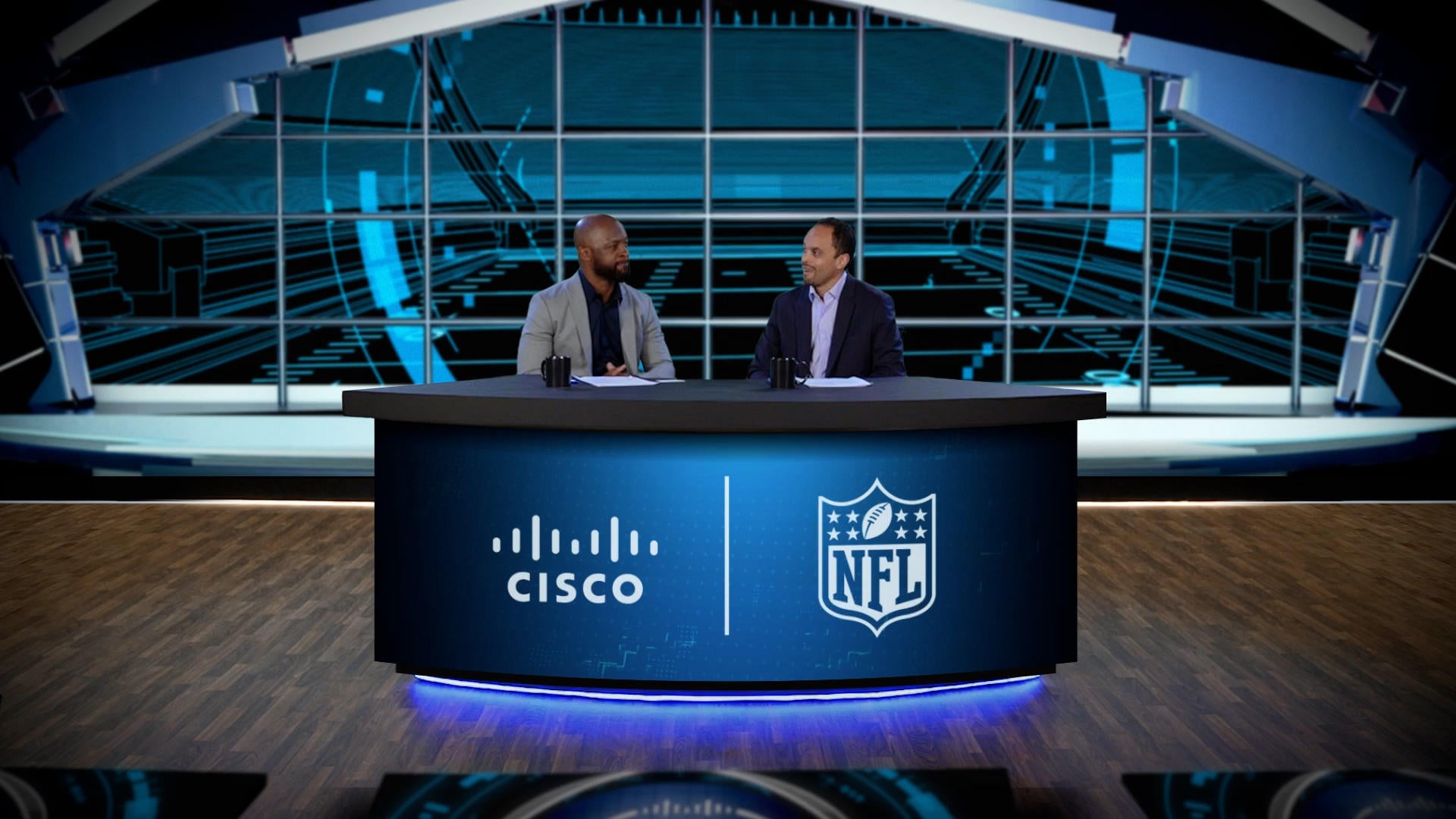
Former NFL player Dante Hall spoke with Tomás Maldonado, the NFL’s Chief Information Security Officer, about what it took to defend Super Bowl LVII. “My team worked tirelessly to collaborate with everyone at the national, state, and local levels. We test and trial things for months leading up, and ultimately, we rely on our partner Cisco to ensure that we have the best playbook in the business,” Maldonado explained.
He went on to say it took “more preparation, building off of our success last year, tightening up our security protocols, and making sure that we had the best technology and talent [to pull it off].” But it’s not just about preparation.
Cisco Cybersecurity Distinguished Engineer Mike Storm described the company’s approach for the Super Bowl as being similar to a football coach’s approach to a big game. He said that Cisco uses the most up-to-date monitoring and threat data to ensure they know what the environment will look like leading up to and on game day.
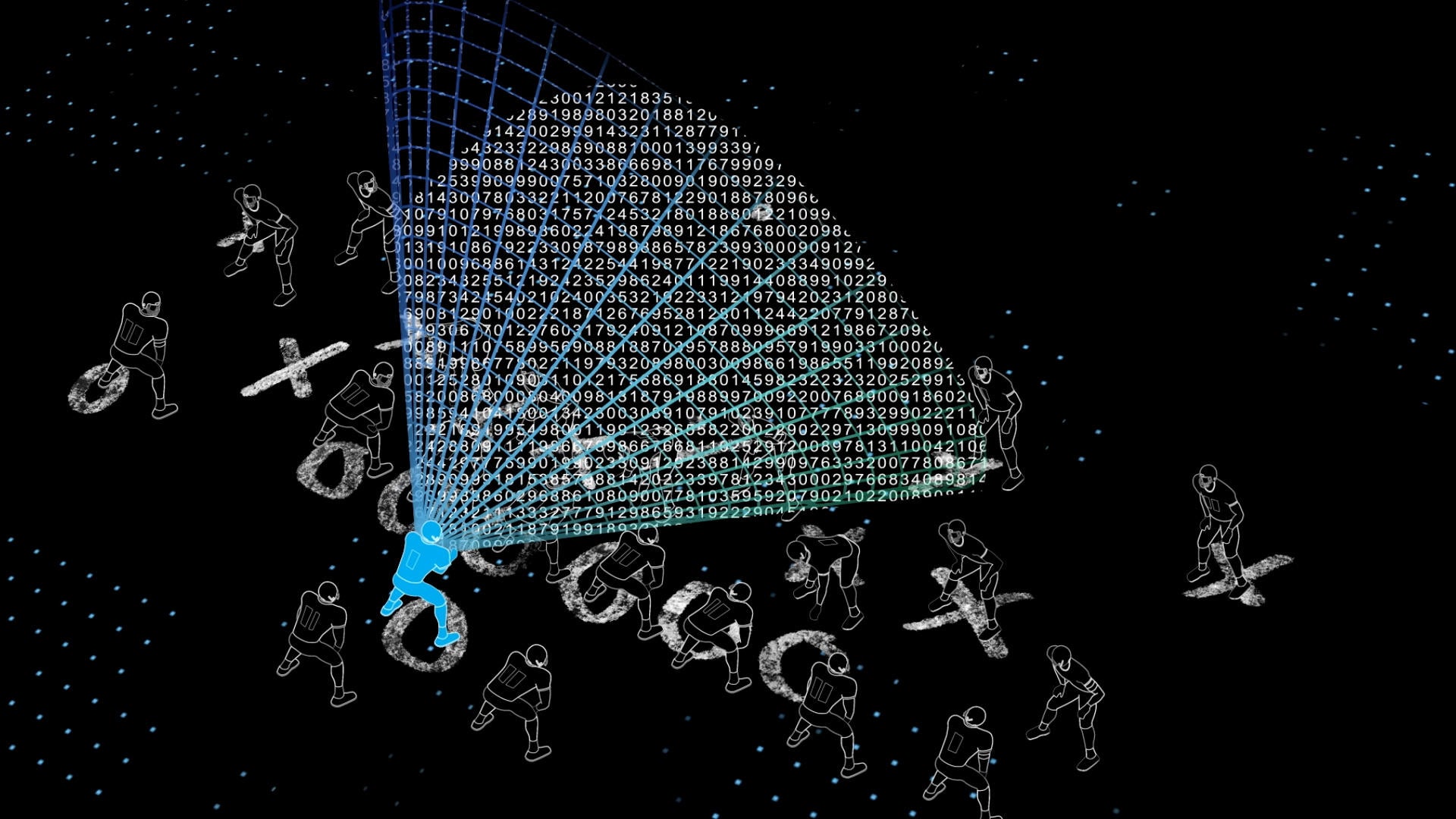
“We walk into every project with a game plan. Many of the skills we bring are the same ones needed to play on the field,” Storm said. He compared Cisco’s maneuvers to those of a quarterback, constantly maximizing visibility and assessing threats close by and farther afield.
“When that blitzing linebacker comes through, it’s the running back’s responsibility to execute a block to protect the quarterback as he goes through his progressions,” Storm told Hall. “Cisco uses its security technology to give the NFL maximum visibility into its network and multiple layers of defense to ensure it can take the right action to complete the game plan and ultimately succeed. With the stakes being so high, we can’t afford to fail. So we won’t.”
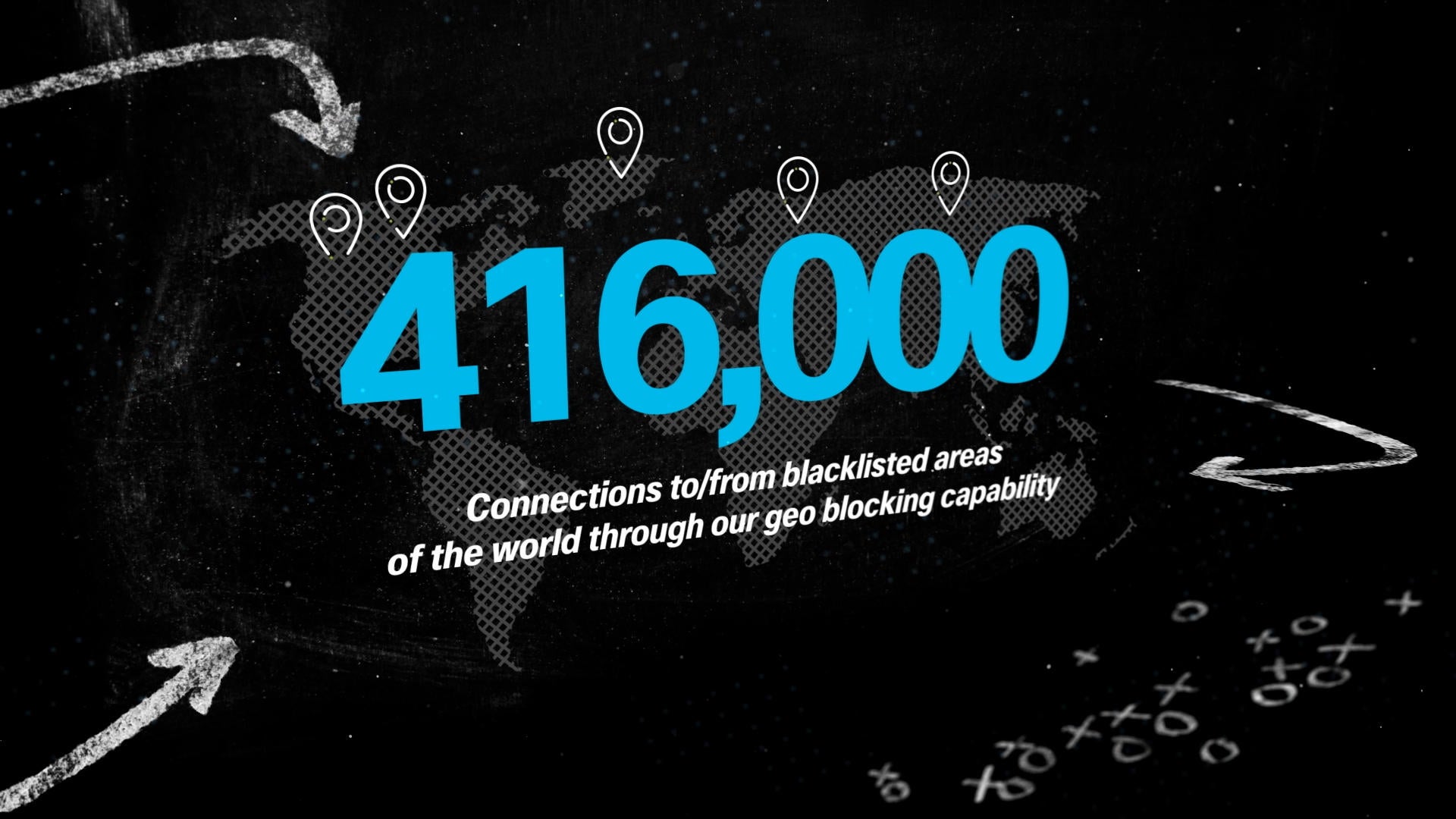
And it paid off! According to Cisco, a massive amount of traffic was managed flawlessly across the network, with nearly 17,000 security intelligence events blocked and more than 400,000 connections blocked to and from blacklisted areas of the world.
“We received millions of queries, with thousands blocked or investigated, and every potential attack was denied,” Storm said.
The work doesn’t stop there. Maldonado says the NFL is becoming a global league, which means it will need to be more connected and protected than ever before. “There is no offseason. We’re already preparing and looking ahead to the Draft,” Maldonado said. “The fans are demanding to be even further engaged and be a part of the experience. This means there are more devices and more data requiring instant visibility.”
This is why when the game plan calls for the best protection, the NFL relies on Cisco.
#Connecting #protecting #Super #Bowl #LVII #Cisco #NFL
If you plot the origins of the greatest inventions in history, you start to notice a pattern: The light bulb, the phonograph, the airplane, air conditioning, the zipper, the microwave, lasers, transistors, the personal computer, the internet, GPS, the smartphone … No country on Earth has as rich a history of modern invention as this one.
But my question is, why is that? Well, the answer may start with a guy from Ohio: Thomas Edison, who we know as the inventor of the light bulb.
“Kind of,” notes Hal Wallace, a curator at the Smithsonian’s National Museum of American History. “What we like to say is, Thomas Edison invented a commercially practical light bulb.”
Wallace says the light bulb was just one component of Edison’s achievement: “He was inventing new dynamoes, cables, switches, sockets, meters. If you’re gonna sell electricity, you gotta have a meter. So, it’s a systems approach.”
On New Year’s Eve 1879, Edison gave an unforgettable demo in Menlo Park, New Jersey. Wallace said, “He lit up the grounds, he lit up the laboratory, he lit up an office building with about a hundred of these light bulbs, and invited the press: ‘Come out to Menlo Park and see what we’ve done.’ He especially invited his investors!
Inventor Thomas A. Edison. CBS News 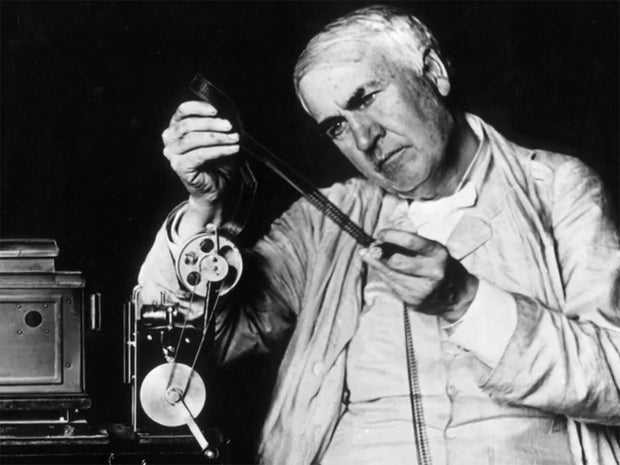
“When the lights come on, it’s almost a mystical experience, because these are not candles, they’re not gas lights, they don’t hiss, they don’t smoke, they don’t create noxious odors. You turn it on, it just sits and it glows.”
Edison’s portfolio also included motion pictures, Portland cement, and even a talking doll, “which is one of his famous flops,” said Wallace.
Steven Johnson, who has written 14 books about innovation and also co-founded a new Google AI tool for research called NotebookLM, says there are two archetypes many people use that are almost always wrong: “They are the kind of lone genius coming up with a brilliant idea, and having that idea in a moment of sudden inspiration,” he said. “That is almost never the case.
“Edison gave a lot of credit to the crew,” Johnson said. “He has a famous line where he’s like, ‘I’m not so much a generator of ideas as I am a sponge.'”
Edison called Menlo Park “the invention factory.” He employed engineers, chemists, glassblowers, and mathematicians. Johnson said, “He came up with this idea that if you got these interesting people together and put them in the same room together, that you could create a kind of a factory for new ideas. And that’s what Menlo Park became.”
Today, Americans come up with more inventions than ever. Over the years, hundreds of entrepreneurs have appeared on ABC’s “Shark Tank,” where they pitch a panel of potential investors, including real estate mogul Barbara Corcoran, Kind Bar founder Daniel Lubetzky, fashion pioneer Daymond John, and venture capitalist Rashaun Williams.
“They think their idea is always terrific,” said Corcoran. “It very often isn’t. Anybody could come up with an idea, and everybody has at least a dozen. Really, everybody’s got an idea, But building a business? Not many people can do it.”
She says most people coming into “Shark Tank” appreciate that the hard part is still ahead. But Lubetzky responded, “It’s not necessarily bad that entrepreneurs don’t know how hard it will be.”
“I would’ve never done what I’ve done, never,” said John.
The TV series “Shark Tank” – featuring fashion pioneer Daymond John, real estate mogul Barbara Corcoran, Kind Bar founder Daniel Lubetzky, and venture capitalist Rashaun Williams – is now in its 17th season of hearing pitches from entrepreneurs eager to sell their inventions and business ideas. CBS News 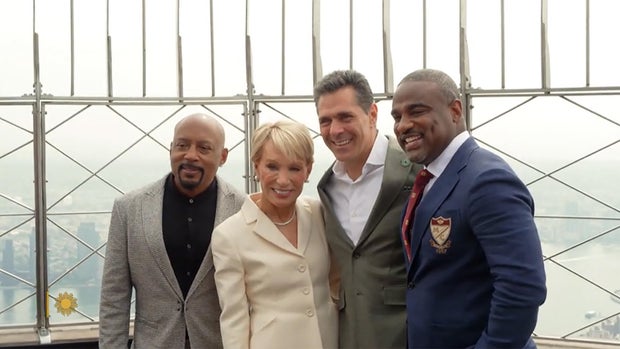
Asked what it is about America that fosters such ingenuity, John replied, “I think the people that founded the country went against all odds to come here. So, we got the cream of the crop of the world.”
Lubetzky added, “You see also the pioneering spirit of all the immigrants and all the people that tried things out, and bring that spirit of risk-taking.”
“And they bring that spirit on,” said John. “And then you have the top people around the world who left for either famine, atrocities, whatever, they made it over here, and they had a goal to make it over here. So they, first if all, are 1% of where they’re from.”
Williams said, “I think we have to give this government a lot of credit, too. A lot of the original venture capital funds were funded by government entities.”
Lubetzky said America’s financial ecosystem “allows ideas to be financed. Venture capital is much, much less developed in most other countries.”
And, Williams said, “We also glamorize the successful entrepreneur in this country, just like we glamorize the professional athlete or entertainer. If you start a company and you sell it for $1 billion and you scale it, you’re on the cover of every magazine. You’re a superstar in this country.”
And, as for failure, Lubetzky said, “In most of the world, if you fail, it’s a negative mark on your family. And you are, you know — it’s horrible. You’re an outcast. In the United States, you shrug it off and you try again.”
Corcoran said, “The real question is, what do the successful entrepreneurs have in common? And I say what they have in common is the ability to get back up, take rejection.”
According to Google’s Steven Johnson, history is periodically upended by huge, foundational, technological breakthroughs.
“Edison realized that for the light bulb to work, he had to build an electrical grid,” he said. “But it was the grid that really changed everything, because once you had power to your homes, yeah, you could turn on a light, but you could also build a dishwasher, and you could have a television, and you could have a radio.”
The personal computer launched another huge round of innovation, and then the internet, and now artificial intelligence. All of it … invented in America.
Johnson said, “Openness to new ideas, willingness for consumers to experiment, that mix of a capitalist model with venture capital, [plus] government support and academic support, you put all those things together, and it’s a pretty powerful combination.”
For more Info:
Story produced by David Rothman. Editor: George Pozderec.
#Celebrating #Americas #spirit #innovation
Meta, Instagram’s parent company, is introducing PG-13-style content limits for all teen accounts. Under the new policy, users under 18 will have mature or sensitive material hidden or restricted, with parents able to add further controls. Tara Hopkins, Instagram’s global director of public policy, joins “CBS Mornings Plus” to discuss the changes.
#Instagrams #teen #safety #rules
